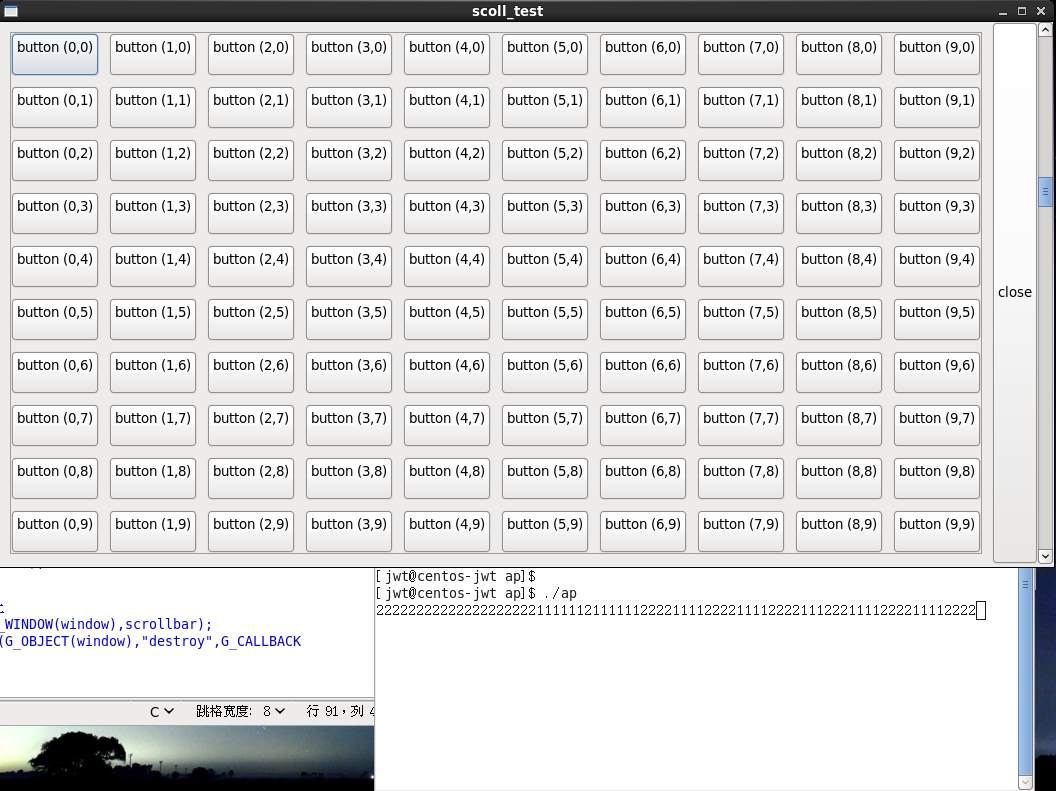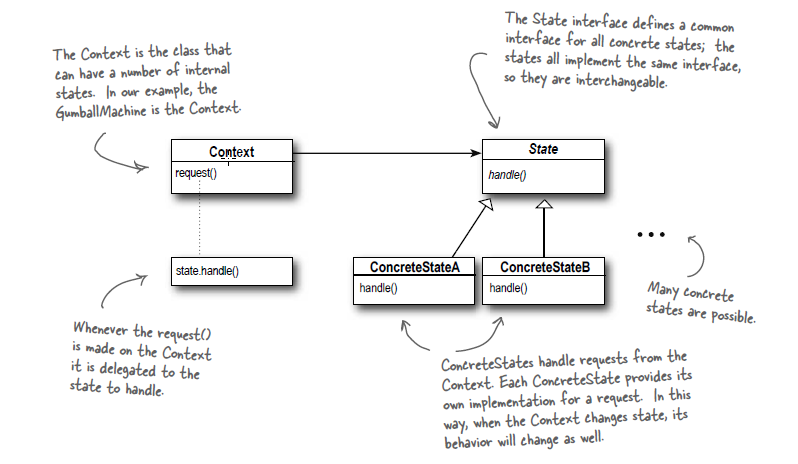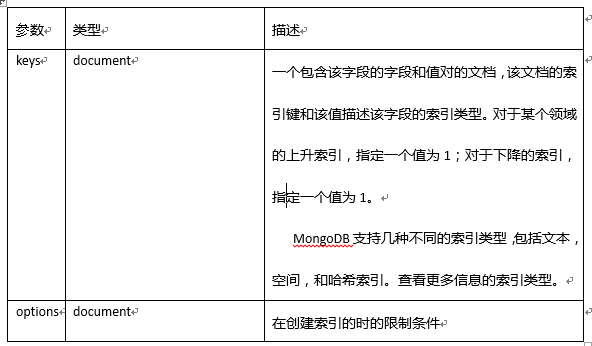JUC-线程池
ThreadPoolExecutor
线程状态
ThreadPoolExecutor 使用 int 的高 3 位来表示线程池状态,低 29 位表示线程数量。
| 状态名 | 高 3位 | 接收新任务 | 处理阻塞队列任务 | 说明 |
|---|---|---|---|---|
| running | 111 | Y | Y | |
| shutdown | 000 | N | Y | 不会接收新任务,但会处理阻塞队列剩余任务 |
| stop | 001 | N | N | 会中断正在执行的任务,并抛弃阻塞队列任务 |
| tidying | 010 | 任务全执行完毕,活动线程为 0 即将进入终结 | ||
| terminated | 011 | 终结状态 |
这些信息存储在原子变量ctl中,将线程状态与线程数合二为一,这样就可以用一次cas操作进行赋值。
// c 为旧值, ctlOf 返回结果为新值ctl.compareAndSet(c, ctlOf(targetState, workerCountOf(c))));// rs 为高 3 位代表线程池状态, wc 为低 29 位代表线程个数,ctl 是合并它们private static int ctlOf(int rs, int wc) {return rs | wc; }
构造方法
public ThreadPoolExecutor(int corePoolSize,int maximumPoolSize,long keepAliveTime,TimeUnit unit,BlockingQueue<Runnable> workQueue,ThreadFactory threadFactory,RejectedExecutionHandler handler)
选取一个参数最多的构造方法,看看创建的时候都需要传入什么参数
- corePoolSize 核心线程数
- maximumPoolSize 最大线程数
- keepAliveTime 救急线程存活时间
- unit 时间单位
- workQueue 阻塞队列
- threadFactory 线程工厂
- handler 拒绝策略
工作方式就是当线程池中还没有线程时,当一个任务提交给线程池后,线程池会创建一个新线程来执行任务。然后任务数达到核心线程数时就会把新提交的任务交给阻塞队列,如果阻塞队列是有界队列,当队列满了之后就会创建救急线程,救急线程数等于最大线程数减去核心线程数,救急线程满了之后就会执行解决策略。
拒绝策略jdk提供了四种实现方式:
- AbortPolicy 让调用者抛出 RejectedExecutionException 异常,这是默认策略
- CallerRunsPolicy 让调用者运行任务
- DiscardPolicy 放弃本次任务
- DiscardOldestPolicy 放弃队列中最早的任务,本任务取而代之
再了解一下其他框架的拒绝策略实现:
- Dubbo 的实现,在抛出 RejectedExecutionException 异常之前会记录日志,并 dump 线程栈信息,方便定位问题
- Netty 的实现,是创建一个新线程来执行任务
- ActiveMQ 的实现,带超时等待(60s)尝试放入队列
当线程池中的救急线程没有任务执行后,就会存活keepAliveTime和unit控制的时间就会销毁。
newFixedThreadPool
public static ExecutorService newFixedThreadPool(int nThreads) {return new ThreadPoolExecutor(nThreads, nThreads,0L, TimeUnit.MILLISECONDS,new LinkedBlockingQueue<Runnable>());}
- 核心线程数就是最大线程数
- 阻塞队列是无界的,可以放任意数量任务
newCachedThreadPool
public static ExecutorService newCachedThreadPool() {return new ThreadPoolExecutor(0, Integer.MAX_VALUE,60L, TimeUnit.SECONDS,new SynchronousQueue<Runnable>());}
- 核心线程数为0,救急线程为整数最大值,生存时间为60秒,意味着全是救急线程。
阻塞队列采用SynchronousQueue 实现,特点是没有容量,没有线程来取是放不进去的
SynchronousQueue
integers = new SynchronousQueue<>(); new Thread(()->{
try {System.out.println("放入任务一");integers.put(1);System.out.println("任务一放入完成");System.out.println("放入任务二");integers.put(2);System.out.println("任务二放入完成");} catch (InterruptedException e) {e.printStackTrace();}},"t1").start();sleep(1);new Thread(() -> {try {System.out.println("拿任务一");integers.take();} catch (InterruptedException e) {e.printStackTrace();}},"t2").start();sleep(1);new Thread(() -> {try {System.out.println("拿任务二");integers.take();} catch (InterruptedException e) {e.printStackTrace();}},"t3").start();

通过例子能体会到没有线程来取是放不进去的
使用场景适合任务数比较密集,但每个任务执行时间较短的情况
newSingleThreadExecutor
public static ExecutorService newSingleThreadExecutor() {return new FinalizableDelegatedExecutorService(new ThreadPoolExecutor(1, 1,0L, TimeUnit.MILLISECONDS,new LinkedBlockingQueue<Runnable>()));}
使用场景:希望多个任务排队执行。线程数固定为 1,任务数多于 1 时,会放入无界队列排队。任务执行完毕,这唯一的线程也不会被释放。
- 自己创建一个单线程串行执行任务,如果任务执行失败而终止那么没有任何补救措施,而线程池还会新建一个线程,保证池的正常工作
- FinalizableDelegatedExecutorService 应用的是装饰器模式,只对外暴露了 ExecutorService 接口,因此不能调用 ThreadPoolExecutor 中特有的方法,所以线程数始终是一不能修改。
任务提交
// 执行任务void execute(Runnable command);// 提交任务 task,用返回值 Future 获得任务执行结果<T> Future<T> submit(Callable<T> task);// 提交 tasks 中所有任务<T> List<Future<T>> invokeAll(Collection<? extends Callable<T>> tasks)throws InterruptedException;// 提交 tasks 中所有任务,带超时时间<T> List<Future<T>> invokeAll(Collection<? extends Callable<T>> tasks,long timeout, TimeUnit unit)throws InterruptedException;// 提交 tasks 中所有任务,哪个任务先成功执行完毕,返回此任务执行结果,其它任务取消<T> T invokeAny(Collection<? extends Callable<T>> tasks)throws InterruptedException, ExecutionException;// 提交 tasks 中所有任务,哪个任务先成功执行完毕,返回此任务执行结果,其它任务取消,带超时时间<T> T invokeAny(Collection<? extends Callable<T>> tasks,long timeout, TimeUnit unit)throws InterruptedException, ExecutionException, TimeoutException;
关闭线程池
/*线程池状态变为 SHUTDOWN- 不会接收新任务- 但已提交任务会执行完- 此方法不会阻塞调用线程的执行*/void shutdown();/*线程池状态变为 STOP- 不会接收新任务- 会将队列中的任务返回- 并用 interrupt 的方式中断正在执行的任务*/List<Runnable> shutdownNow();
任务调度线程池
用来调度任务的执行时间
ScheduledExecutorService executor = Executors.newScheduledThreadPool(2);// 添加两个任务,希望它们都在 1s 后执行System.out.println("程序开始执行时间"+new Date());executor.schedule(() -> {System.out.println("任务1,执行时间:" + new Date());try {Thread.sleep(2000); } catch (InterruptedException e) {}}, 1000, TimeUnit.MILLISECONDS);executor.schedule(() -> {System.out.println("任务2,执行时间:" + new Date());}, 1000, TimeUnit.MILLISECONDS);

我们可以看到任务在延迟一秒后执行。
定时任务
实现一个每周四18点执行的任务。
public static void main(String[] args) {//当前时间LocalDateTime now = LocalDateTime.now();//获取周四时间LocalDateTime time = now.withHour(18).minusMinutes(0).minusSeconds(0).minusNanos(0).with(DayOfWeek.THURSDAY);long period = 1000*60*60*24*7;ScheduledExecutorService pool = Executors.newScheduledThreadPool(1);//防止当前时间已经过了这周要执行的时间if(now.compareTo(time)>0){time = time.plusWeeks(1);}long initailDelay = Duration.between(now,time).toMillis();pool.scheduleAtFixedRate(()->{System.out.println("牛逼");},initailDelay,period, TimeUnit.MILLISECONDS);}



































还没有评论,来说两句吧...